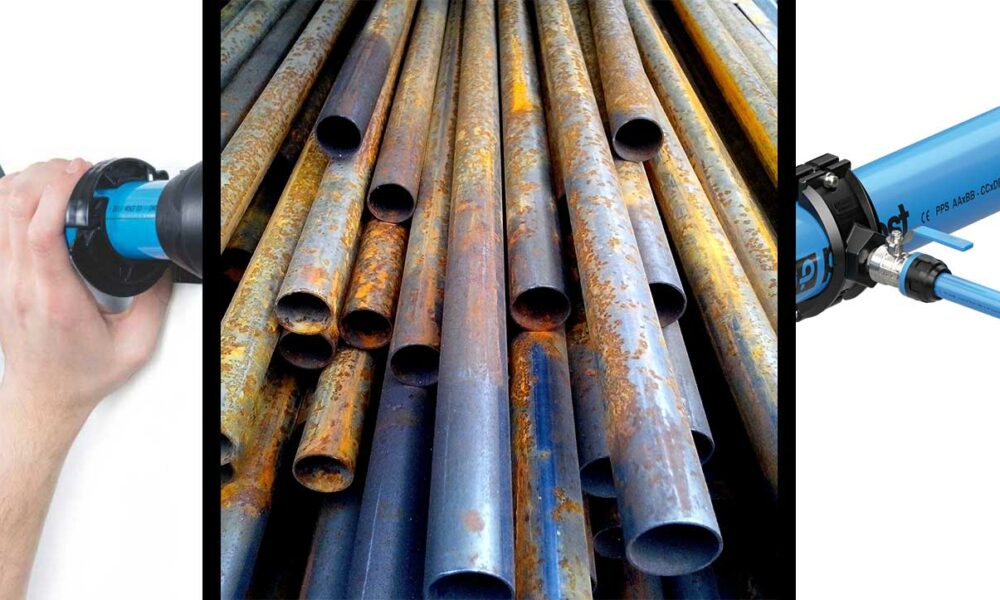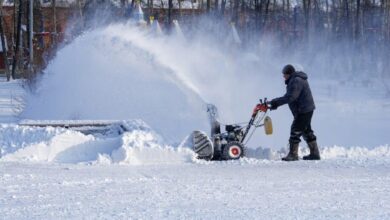Materials Matter: Comparing Different Piping Options for Compressed Air Systems

Compressed air systems are the unsung workhorses of countless industries, powering tools, machinery, and processes that keep businesses running smoothly. While the compressor itself is a crucial component, the piping system that distributes the compressed air is equally vital for ensuring efficiency, reliability, and longevity. Choosing the right piping material can significantly impact the performance and cost-effectiveness of your compressed air system.
Traditional Piping Materials
Historically, black iron and galvanized steel pipes have been the go-to choices for compressed air systems. Their strength and relatively low initial cost make them attractive options. However, these materials have significant drawbacks. They are prone to corrosion and rust, especially in humid environments. This corrosion can contaminate the compressed air with rust particles, leading to equipment damage, increased maintenance costs, and reduced air quality.
Copper piping, while less common, offers better corrosion resistance than iron or steel. However, it can be more expensive and requires specialized installation skills. Additionally, copper may not be suitable for all applications due to its reactivity with certain gasses.
The Rise of Aluminum Compressed Air Piping
In recent years, aluminum compressed air piping has emerged as a popular alternative to traditional materials. Its lightweight nature makes it easier to handle and install, reducing labor costs. Unlike iron and steel, aluminum is naturally corrosion-resistant, ensuring cleaner air quality and minimizing the risk of rust-related problems.
Aluminum compressed air piping also offers excellent thermal conductivity, meaning it can dissipate heat more efficiently than other materials. This can help to reduce energy consumption and lower operating costs. The smooth inner surface of aluminum pipes minimizes friction, allowing for smoother airflow and reduced pressure drops. This translates to improved efficiency and performance of the entire compressed air system.
Compressed air pipe suppliers now offer a wide range of aluminum piping options, including both rigid and flexible varieties. Rigid aluminum pipes are suitable for permanent installations, while flexible aluminum pipes offer greater versatility for applications where adjustments or modifications may be necessary.
Plastic Piping Options
Plastic piping, including materials like PVC, ABS, and polyethylene, has gained traction as a cost-effective alternative for compressed air systems. These materials are lightweight, easy to install, and inherently resistant to corrosion. Their affordability and ease of use make them particularly appealing for smaller businesses or DIY projects.
However, plastic piping does have limitations. It generally has lower pressure ratings compared to metal options, making it less suitable for high-pressure applications. Over time, plastic pipes can become brittle and may develop leaks, especially when exposed to UV radiation or extreme temperatures. Consulting with compressed air pipe suppliers is crucial to ensure you choose the right type of plastic and grade for your specific needs and operating conditions.
Specialized Piping for Nitrogen Systems
Nitrogen piping systems demand specialized materials to maintain the purity and integrity of the nitrogen gas. Nitrogen is an inert gas, meaning it doesn’t readily react with other substances. However, using incompatible piping materials can lead to contamination, compromising the effectiveness of nitrogen-based processes.
Stainless steel is a common choice for nitrogen piping due to its excellent corrosion resistance and inertness to nitrogen. Certain types of plastics, such as high-density polyethylene (HDPE), can also be used for nitrogen systems, provided they are specifically designed and rated for this purpose.
Proper selection of piping materials is crucial for the reliable and efficient operation of nitrogen systems. Whether it’s for blanketing, purging, or other industrial applications, ensuring the purity of nitrogen is essential to maintain product quality and prevent equipment damage.
Factors to Consider When Choosing Piping Material
Selecting the right piping material for your compressed air system requires careful consideration of various factors. The specific application is a primary determinant. High-pressure systems may require robust materials like steel or aluminum, while low-pressure applications might be suitable for plastic piping.
Budget constraints also play a role, as different materials come with varying costs. Consider the desired lifespan of the system as well. Metal piping generally offers greater longevity than plastic options. Environmental conditions, such as temperature fluctuations and exposure to moisture or chemicals, should also influence your decision.
Consulting with experts in the field, such as compressed air pipe suppliers, is highly recommended. They can assess your specific needs, evaluate your operating conditions, and recommend the most suitable piping material to maximize the efficiency, reliability, and longevity of your compressed air system.
Conclusion
The choice of piping material is a critical decision that can significantly impact the performance and cost-effectiveness of your compressed air system. Traditional materials like iron and steel have their merits, but modern alternatives like aluminum and specialized plastics offer significant advantages in terms of corrosion resistance, energy efficiency, and ease of installation.
By carefully considering your specific needs, budget, and operating conditions, you can select the ideal piping material for your compressed air or nitrogen system. Whether you opt for aluminum compressed air piping, plastic piping, or specialized materials for nitrogen applications, investing in the right piping will ensure optimal performance and longevity, saving you time, money, and hassle in the long run.





